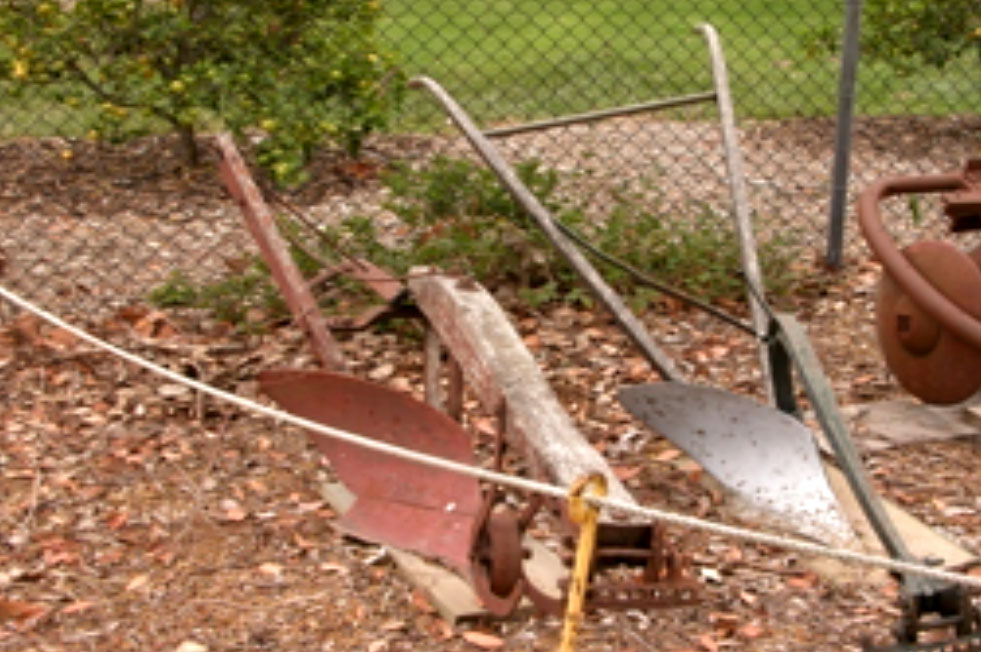Plows
The plow (also spelled plough) is a farm tool for loosening or turning the soil before sowing seed or planting. The prime purpose of plowing is to turn over the uppermost soil to bring fresh nutrients to the surface, while burying weeds and crop remains to decay (die, eventually producing nutrients). Trenches cut by the plow are called furrows.
A plow may have a wooden, iron or steel frame, with a blade attached to cut and loosen the soil. Plows were originally drawn by horses or oxen with the farmer walking behind, holding on to the handles of the plow itself. Manual plow in Action:
https://archive.org/details/gov.archives.arc.13595
Soon, seats were attached above the wheels where farmers could sit while handling the reins of the animals pulling the plow.
Later, with the industrial revolution, steam-engines with a hitch pulled the plows, with the farmers sitting atop the engine to guide its direction and speed. Finally, in the early 20th century, tractors powered the plows. 3-Bottom Plow in Action:
https://archive.org/details/0914_Soybeans_for_Farm_and_Industry_00_21_44_29
Evolution of Plows
- Single-Sided Plow – turned the soil over in one direction to create a single furrow
- Reversible Plow – two plows mounted back to back, one turning left and the other turning right to create a single furrow.
- Multiple-Furrow Plows – multiple plows combined on a single frame enable creating multiple furrows in one pass of the plow
Modern Plows – today’s plows are usually multiply reversible, mounted on a tractor with two to as many as seven plows attached to a frame. Semi-mounted plows (whose lifting is assisted by a wheel about halfway along their length) can have as many as 18. The tractor's hydraulics are used to lift and reverse the implement and to adjust furrow width and depth.
Plows in the Rancho La Patera Yard:
Bottom Plows: have shovel shapes tillers that turns the soil. Single bottom plow:
Disc Plow: have round, concave discs of hardened steel, sharpened and sometimes serrated on the edge to achieve deeper penetration of the soil.
Hillside Plow: sometimes also known as “two-way” plows, can be set to throw the furrow in either direction, depending on the terrain. In plowing around a field with a conventional plow, half of the furrows must always be thrown uphill, a feat that’s difficult to accomplish in thick sod on a stiff grade. When a hillside or two-way plow is used, one can plow back and forth on the same side of the field and turn all the furrows downhill.
Gang Plow: designed to turn two or more furrows at a time.
